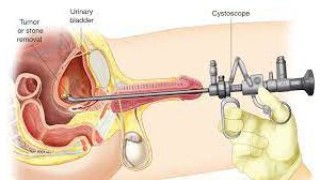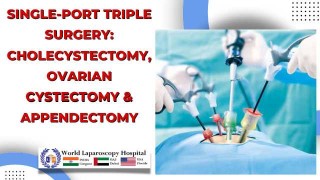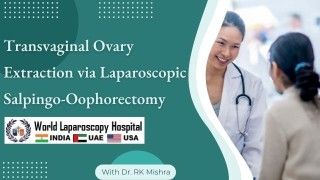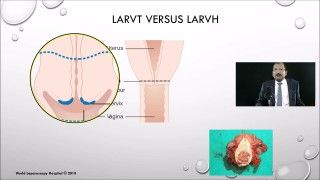Diagnostic Laparoscopy, Hysteroscopy, and Dye Test for personalized infertility treatment
Add to
Share
2,838 views
Report
2 years ago
Description
When faced with infertility challenges, Diagnostic Laparoscopy, Hysteroscopy, and Dye Test serve as invaluable tools for uncovering crucial insights that pave the way for personalized treatment plans. These diagnostic procedures offer a comprehensive evaluation of the reproductive system, providing valuable information that can guide fertility specialists in addressing the underlying causes of infertility. Diagnostic Laparoscopy is a minimally invasive surgical procedure that allows for a detailed examination of the pelvic region. Through small incisions, a laparoscope (a thin, lighted instrument with a camera) is inserted, providing a magnified view of the reproductive organs. This procedure enables the evaluation of the uterus, fallopian tubes, and ovaries, helping identify abnormalities such as endometriosis, adhesions, or ovarian cysts that may contribute to infertility. Hysteroscopy, on the other hand, focuses on assessing the condition of the uterus. It involves the insertion of a thin, flexible hysteroscope through the vagina and cervix to visualize the uterine cavity. This procedure aids in the identification of abnormalities such as polyps, fibroids, or uterine adhesions, which can impact fertility and implantation. Additionally, hysteroscopy allows for the direct visualization of the fallopian tube openings, assessing their patency and detecting any blockages. The Dye Test, also known as a tubal patency test or chromotubation, is often performed during laparoscopy or hysteroscopy. A colored dye is injected into the uterus, and its flow through the fallopian tubes is observed. This test helps determine if the fallopian tubes are open and allows for the assessment of their function and potential obstructions that can hinder the fertilization process. By combining these diagnostic procedures, fertility specialists gain critical insights into the underlying causes of infertility. The information obtained through Diagnostic Laparoscopy, Hysteroscopy, and Dye Test enables the development of personalized treatment plans tailored to address the specific challenges identified in each individual case. With a comprehensive understanding of the reproductive system and any abnormalities present, fertility specialists can recommend appropriate interventions such as hormonal therapies, surgical interventions, or assisted reproductive techniques like in vitro fertilization (IVF). These tailored treatment plans offer the best chance of overcoming infertility hurdles and achieving successful pregnancies. It is important to note that the decision to undergo Diagnostic Laparoscopy, Hysteroscopy, and Dye Test should be made in consultation with a qualified fertility specialist. Each case is unique, and the specific diagnostic procedures recommended will depend on individual circumstances and medical history. In conclusion, Diagnostic Laparoscopy, Hysteroscopy, and Dye Test play a vital role in uncovering fertility insights that guide personalized treatment plans. By providing a comprehensive evaluation of the reproductive system, these procedures help fertility specialists identify underlying causes of infertility and develop tailored interventions. With the valuable information gained from these diagnostic tools, individuals and couples can embark on a fertility journey armed with knowledge and a higher likelihood of achieving their dream of parenthood. When faced with the challenge of infertility, Diagnostic Laparoscopy, Hysteroscopy, and Dye Test offer a comprehensive approach to uncovering crucial insights for personalized treatment plans. These diagnostic procedures delve deep into the reproductive system, providing valuable information that helps fertility specialists identify the underlying causes of infertility and guide individuals and couples towards the most effective treatment strategies. Diagnostic Laparoscopy, a minimally invasive surgical procedure, allows for a thorough examination of the pelvic region. By inserting a laparoscope through small incisions, fertility specialists gain a magnified view of the uterus, fallopian tubes, and ovaries. This procedure is instrumental in detecting conditions such as endometriosis, adhesions, or ovarian cysts that may contribute to infertility. By accurately identifying these factors, fertility specialists can develop targeted treatment plans that address specific concerns. Complementing Laparoscopy, Hysteroscopy focuses specifically on evaluating the condition of the uterus. Using a thin, flexible hysteroscope inserted through the vagina and cervix, fertility specialists can visualize the uterine cavity. This procedure allows for the identification of abnormalities such as polyps, fibroids, or uterine adhesions that may impact fertility and implantation. Additionally, hysteroscopy provides a direct view of the fallopian tube openings, enabling assessment of their patency and the detection of any blockages. The Dye Test, often performed during Laparoscopy or Hysteroscopy, provides crucial information about tubal patency and function. A colored dye is introduced into the uterus, and its flow through the fallopian tubes is observed. This test helps determine if the fallopian tubes are open and assesses their capacity for proper fertilization. Any potential obstructions or abnormalities can be identified, allowing fertility specialists to tailor treatment plans accordingly. By combining the results of Diagnostic Laparoscopy, Hysteroscopy, and the Dye Test, fertility specialists gain a comprehensive understanding of the specific factors contributing to infertility. Armed with this knowledge, they can design personalized treatment strategies that address the identified issues. These strategies may include hormonal therapies, minimally invasive surgical interventions, or advanced assisted reproductive techniques such as in vitro fertilization (IVF) or intrauterine insemination (IUI). It is crucial to consult with a qualified fertility specialist to determine the most appropriate diagnostic procedures and treatment options for individual cases. Each individual's situation is unique, and a personalized approach is necessary to achieve the best outcomes. In summary, Diagnostic Laparoscopy, Hysteroscopy, and Dye Test offer an invaluable pathway to unlocking fertility insights. By thoroughly examining the reproductive system, these diagnostic procedures enable fertility specialists to identify underlying causes of infertility and design personalized treatment plans. With the guidance of these advanced techniques, individuals and couples can navigate their fertility journey with greater clarity and confidence, ultimately increasing their chances of successful conception and realizing their dreams of parenthood.
Similar Videos






